Cotton Australia field lots of questions about Australian cotton from brands, retailers and the supply chain and we've done our best to answer the most common ones here. Browse these topics that cover sourcing, quality, sustainability, traceability and a whole lot more...or use the search box to ask a question.
Supply Chain Information
-

How to use cotton fabric technologies
An enormous amount of research and development investment has been made in finding new ways with cotton
Read More -

How is Australian Cotton Bought and Sold?
Cotton is an agricultural commodity that's traded on the world market and the vast majority of Australian cotton is exported as raw cotton bales to spinning mills.
Read More -

Sourcing Raw Australian Cotton Bales
Raw Australian cotton bales, including Better Cotton from Australia, can be procured through the thirteen member organisations that make up the Australian Cotton Shippers Association (ACSA).
Read More -

Sourcing Yarns or Fabrics Made from Australian Cotton
Brand owners, retailers and manufacturers wanting to use Australian cotton must demand it through their supply chains by making the request to suppliers and manufacturers
Read More -

Specific Qualities of Australian Cotton
Australian cotton growers produce some of the longest, strongest, whitest and most contamination-free cotton in the world.
Read More -

How Much Better Cotton (BCI) is Grown in Australia?
The number of Australian cotton growers registered with the Better Cotton Initiative has been growing each year.
Read More -
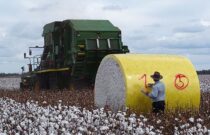
Reasons for Australian Cotton’s Superior Quality
Fibre quality is affected by a large number of interacting factors that occur throughout the supply chain including cotton variety, seasonal conditions such as temperature and rain, crop management, harvesting, ginning and transport.
Read More -
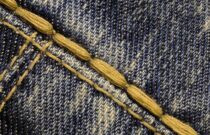
Understanding Yarn Counts and the Uses of Australian Cotton
Understanding and measuring yarn count is important to fabric technologists and designers, because it provides a key to predicting a fabric’s quality and properties such as structure, weight, comfort, porosity and movement.
Read More -

Uses for Cotton
Cotton is a long-lasting and versatile fibre that can be used in a huge range of products from fashion and homewares to industrial goods.
Read More -
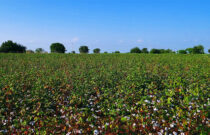
Is Organic Cotton Grown in Australia?
The short answer is no, for a variety of reasons. In fact to Cotton Australia's knowledge there are no organic cotton farms in Australia.
Read More -

Markets for Australian cotton
99.9% of Australia's cotton is exported, making Australia the third largest cotton exporter in the world. The main reason is that there are no cotton spinning mills in Australia, which is an early stage of processing where yarn is produced.
Read More -

Does Australia Grow Genetically Modified (GM) Cotton?
More than 99% of Australia's cotton crop uses biotechnology which refers to the use of cotton varieties with transgenic or genetically modified (GM) traits.
Read More -
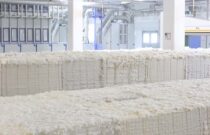
What Happens Once Australian Cotton is Delivered to the Spinning Mill?
Once Australian cotton is delivered to the spinning mill, the Australian cotton industry no longer has control over how it is used, in what products or its destination.
Read More -

Sourcing BCI Cotton from Australia
The Better Cotton Initiative (BCI) is a multi-stakeholder organisation that is working with farmers all over the world to improve the natural environment and their livelihoods.
Read More -
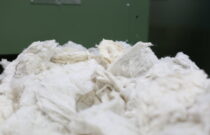
How Australian Cotton Quality Is Measured (or classed)
Every bale of Australian cotton is individually classed through modern certified classing facilities that participate in the International Cotton Advisory Committee CSITC Round Trials to ensure the highest standards.
Read More -

Australian Cotton Price and Premiums
The premium for Australian cotton depends on the product category and what the customer is currently using.
Read More -
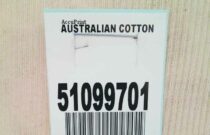
Australian Cotton Traceability
In sourcing Australian cotton for your products, you are choosing high quality, contamination free cotton fibre, produced with the highest environmental and social standards.
Read More -

The Need for Traceability and Transparency
The traceability of raw materials through cotton supply chains has become a very important issue for brands and retailers wanting greater levels of visibility around where products originate.
Read More -
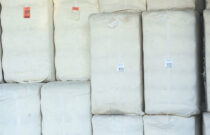
A Bale of Cotton Can Make…
Ever wondered how much cotton you might need to make your Australian cotton products? In a normal season, Australia's cotton growers produce around 4 million bales of cotton, enough to clothe around 500 million people.
Read More -
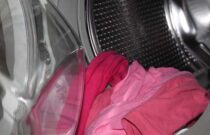
Does Cotton Shed Microfibres?
As the issue of microplastic pollution has become a key topic for the textile industry, Australia's Cotton Research and Development Corporation in partnership with Cotton Incorporated, funded a study to examine this issue for cotton as opposed to other fabrics.
Read More -

The Dyeability of Australian Cotton
Research conducted by the CSIRO at Deakin University in 2016 showed that Australian cotton had better dye uptake than cottons from other countries, as per the abstract below, published in the Textile Research Journal.
Read More -

Does it take 20,000 litres of water to grow a t-shirt?
The statement that “it takes 20,000 litres of water to grow the cotton for a t-shirt” (and its many variations) has been published and republished by a multitude of organisations across the globe over many years.
Read More -
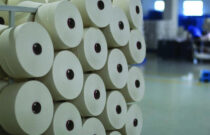
Why Spinning Mills Love Australian Cotton
The conversion of cotton fibre to a textile starts with the spinner, for whom price and quality are the most important attributes.
Read More -

The Features and Benefits of Cotton
Cotton is the world’s favourite natural fibre. Its beauty, comfort, durability and versatility make it the perfect choice for clothing, bedding, textiles and many other products.
Read More -
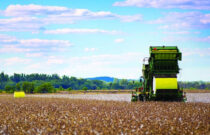
Why Choose Australian Cotton?
Cotton is grown in more than 100 countries and accounts for around 25% of worldwide fibre production. Australia is a relatively small producer by world standards – accounting for around 3-5% of global production – but is the third largest exporter.
Read More -
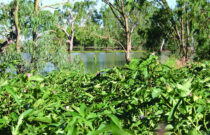
Is Australian Cotton Sustainable?
Cotton Australia and the Australian cotton industry argues that Australian cotton is undoubtedly environmentally and socially sustainable.
Read More -

Cotton Life Cycle Assessment
In 2016 the Australian cotton industry, through its Cotton Research and Development Corporation, participated in the most comprehensive life cycle assessment of cotton clothing ever attempted.
Read More -

Why Don’t We Grow Hemp in Australia Instead of Cotton?
Hemp, like cotton, is a natural fibre derived from a plant. Both can be manufactured into yarn and fabrics used in the production of fashion and homewares.
Read More -
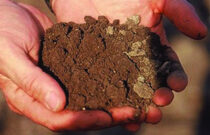
How Does the Australian Cotton Industry Measure Sustainability Impact?
It’s not enough to change farming practices. The Australian cotton industry believes these changes must result in meaningful positive impacts for the natural environment, our farm businesses and our communities.
Read More -
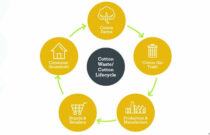
Where Does Cotton Fit in the Fashion Circular Economy?
Cotton has a natural place in the circular economy. It’s biodegradable, renewable and recyclable and it doesn’t have the microplastics problem associated with synthetic fabrics.
Read More -

What is the Better Cotton Initiative (BCI)?
The Better Cotton Initiative (BCI) is a multi-stakeholder organisation that is working with farmers all over the world to improve the natural environment and their livelihoods.
Read More -
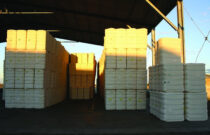
The Economics of Cotton in Australia
Cotton makes an enormous contribution to the Australian economy, and over 150 rural and regional communities where our farming families live and work.
Read More -

Products Made from Cotton Seed
We mostly focus on cotton as a fibre crop, but did you know it's also an important food crop?
Read More -

10 Interesting Cotton Facts
Cotton is the world's oldest natural fibre, dating back some 8,000 years. With a long history, and an industry including over 300 million farming families there are plenty of interesting facts about cotton that you may not know.
Read More -
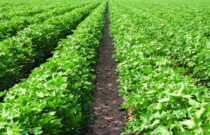
The Current Australian Cotton Crop
The main factor that affects the size of the Australian cotton crop is availability of water. As an annual crop (planted once a year), cotton only gets planted when there's water available.
Read More -
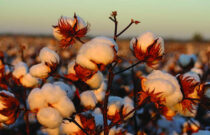
Why Do Australian Farmers Choose to Grow Cotton?
There are many reasons that a farmer chooses to grow a specific selection of crops, including cotton.
Read More -
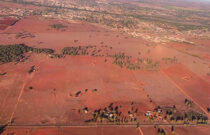
What is the Impact of the Current Drought on Australian Cotton?
While there has been some recent reprieve in some areas, Australian cotton farmers have been unfortuantely experiencing severe and extended drought conditions through the cotton growing valleys of NSW and Queensland.
Read More -
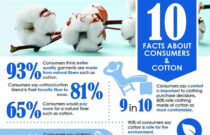
10 Facts About Consumers and Cotton
Cotton Incorporated in the U.S. has conducted significant market research to assess what consumers globally regard as cotton's greatest attributes, what drives purchasing decisions and consumer preferences.
Read More -

Is Cotton a Thirsty Crop?
You may have read that cotton is a "thirsty crop"- it's a common phrase that's been used over and over again over many decades, and is simply not the case.
Read More -

How is Water in Australia Prioritised?
Water in Australia is a highly regulated natural resource managed primarily by State Governments. Unlike in other parts of the world, no farmer can take water whenever they need or want it.
Read More -

More Crop per drop - Water use efficiency in Australian Cotton
Water use efficiency (WUE) is defined as the cotton crop’s capacity to convert water into yield. Australian cotton growers produce yields three times the world average, making them the most water efficient producers of cotton globally.
Read More -
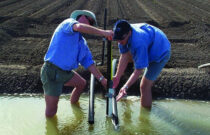
Focus on Water Research and Development
In the past two decades, the Cotton Research and Development Corporation (CRDC) has invested many millions of dollars in water use efficiency and this continues to be a focus of industry R&D.
Read More -

Worldwide Demand for Fibre
According to the International Cotton Advisory Committee (ICAC), the worldwide demand for fibre is growing by about 3-4 percent each year as a result of population growth and rising wealth.
Read More -

Microfibres and the Textile Industry
Microplastics are plastic particles less than five mm in diameter. They can occur from the degradation of large plastic waste (secondary) or from primary sources
Read More -
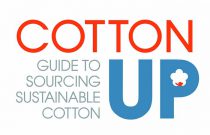
What Are the Different Sustainable Cottons Available?
For brands and retailers wanting to source sustainable cotton, there are many options. These include myBMP cotton from Australia,
Read More -

10 Things You Need to Know About Water and Australian Cotton
Water is emotional, complex and challenging and the cotton industry understands this probably better than most.
Read More -
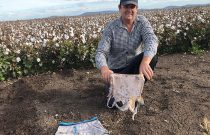
Does Cotton Biodegrade Faster Than Polyester? A Practical Experiment.
Soil Your Undies is a unique experiment, used by Australia's cotton farmers to test for soil health. Undies are buried in the soil, and then dug up around six weeks later.
Read More -

What is the difference between the sustainability impact of mybmp (best management practices) certified cotton and generic australian cotton?
MyBMP recognise the value of sustainability and environmental practises. Australia’s myBMP (Best Management Practices) program was established 25 years ago as an industry facing initiative
Read More
-

How is Australian Cotton Bought and Sold?
Cotton is an agricultural commodity that's traded on the world market and the vast majority of Australian cotton is exported as raw cotton bales to spinning mills.
Read More -

Sourcing Raw Australian Cotton Bales
Raw Australian cotton bales, including Better Cotton from Australia, can be procured through the thirteen member organisations that make up the Australian Cotton Shippers Association (ACSA).
Read More -

Sourcing Yarns or Fabrics Made from Australian Cotton
Brand owners, retailers and manufacturers wanting to use Australian cotton must demand it through their supply chains by making the request to suppliers and manufacturers
Read More -

How Much Better Cotton (BCI) is Grown in Australia?
The number of Australian cotton growers registered with the Better Cotton Initiative has been growing each year.
Read More -

What Happens Once Australian Cotton is Delivered to the Spinning Mill?
Once Australian cotton is delivered to the spinning mill, the Australian cotton industry no longer has control over how it is used, in what products or its destination.
Read More -

Sourcing BCI Cotton from Australia
The Better Cotton Initiative (BCI) is a multi-stakeholder organisation that is working with farmers all over the world to improve the natural environment and their livelihoods.
Read More -

Australian Cotton Price and Premiums
The premium for Australian cotton depends on the product category and what the customer is currently using.
Read More -

Australian Cotton Traceability
In sourcing Australian cotton for your products, you are choosing high quality, contamination free cotton fibre, produced with the highest environmental and social standards.
Read More -

The Need for Traceability and Transparency
The traceability of raw materials through cotton supply chains has become a very important issue for brands and retailers wanting greater levels of visibility around where products originate.
Read More -

A Bale of Cotton Can Make…
Ever wondered how much cotton you might need to make your Australian cotton products? In a normal season, Australia's cotton growers produce around 4 million bales of cotton, enough to clothe around 500 million people.
Read More -

The Dyeability of Australian Cotton
Research conducted by the CSIRO at Deakin University in 2016 showed that Australian cotton had better dye uptake than cottons from other countries, as per the abstract below, published in the Textile Research Journal.
Read More -

Why Choose Australian Cotton?
Cotton is grown in more than 100 countries and accounts for around 25% of worldwide fibre production. Australia is a relatively small producer by world standards – accounting for around 3-5% of global production – but is the third largest exporter.
Read More -

Where Does Cotton Fit in the Fashion Circular Economy?
Cotton has a natural place in the circular economy. It’s biodegradable, renewable and recyclable and it doesn’t have the microplastics problem associated with synthetic fabrics.
Read More -

The Economics of Cotton in Australia
Cotton makes an enormous contribution to the Australian economy, and over 150 rural and regional communities where our farming families live and work.
Read More -

10 Interesting Cotton Facts
Cotton is the world's oldest natural fibre, dating back some 8,000 years. With a long history, and an industry including over 300 million farming families there are plenty of interesting facts about cotton that you may not know.
Read More -

Why Do Australian Farmers Choose to Grow Cotton?
There are many reasons that a farmer chooses to grow a specific selection of crops, including cotton.
Read More -

10 Facts About Consumers and Cotton
Cotton Incorporated in the U.S. has conducted significant market research to assess what consumers globally regard as cotton's greatest attributes, what drives purchasing decisions and consumer preferences.
Read More -

What Are the Different Sustainable Cottons Available?
For brands and retailers wanting to source sustainable cotton, there are many options. These include myBMP cotton from Australia,
Read More -

What is the difference between the sustainability impact of mybmp (best management practices) certified cotton and generic australian cotton?
MyBMP recognise the value of sustainability and environmental practises. Australia’s myBMP (Best Management Practices) program was established 25 years ago as an industry facing initiative
Read More
-

Specific Qualities of Australian Cotton
Australian cotton growers produce some of the longest, strongest, whitest and most contamination-free cotton in the world.
Read More -

Reasons for Australian Cotton’s Superior Quality
Fibre quality is affected by a large number of interacting factors that occur throughout the supply chain including cotton variety, seasonal conditions such as temperature and rain, crop management, harvesting, ginning and transport.
Read More -

Understanding Yarn Counts and the Uses of Australian Cotton
Understanding and measuring yarn count is important to fabric technologists and designers, because it provides a key to predicting a fabric’s quality and properties such as structure, weight, comfort, porosity and movement.
Read More -

Uses for Cotton
Cotton is a long-lasting and versatile fibre that can be used in a huge range of products from fashion and homewares to industrial goods.
Read More -

Does Australia Grow Genetically Modified (GM) Cotton?
More than 99% of Australia's cotton crop uses biotechnology which refers to the use of cotton varieties with transgenic or genetically modified (GM) traits.
Read More -

How Australian Cotton Quality Is Measured (or classed)
Every bale of Australian cotton is individually classed through modern certified classing facilities that participate in the International Cotton Advisory Committee CSITC Round Trials to ensure the highest standards.
Read More -

Does Cotton Shed Microfibres?
As the issue of microplastic pollution has become a key topic for the textile industry, Australia's Cotton Research and Development Corporation in partnership with Cotton Incorporated, funded a study to examine this issue for cotton as opposed to other fabrics.
Read More -

The Dyeability of Australian Cotton
Research conducted by the CSIRO at Deakin University in 2016 showed that Australian cotton had better dye uptake than cottons from other countries, as per the abstract below, published in the Textile Research Journal.
Read More -

Why Spinning Mills Love Australian Cotton
The conversion of cotton fibre to a textile starts with the spinner, for whom price and quality are the most important attributes.
Read More -

The Features and Benefits of Cotton
Cotton is the world’s favourite natural fibre. Its beauty, comfort, durability and versatility make it the perfect choice for clothing, bedding, textiles and many other products.
Read More -

Why Choose Australian Cotton?
Cotton is grown in more than 100 countries and accounts for around 25% of worldwide fibre production. Australia is a relatively small producer by world standards – accounting for around 3-5% of global production – but is the third largest exporter.
Read More -

10 Interesting Cotton Facts
Cotton is the world's oldest natural fibre, dating back some 8,000 years. With a long history, and an industry including over 300 million farming families there are plenty of interesting facts about cotton that you may not know.
Read More -

10 Facts About Consumers and Cotton
Cotton Incorporated in the U.S. has conducted significant market research to assess what consumers globally regard as cotton's greatest attributes, what drives purchasing decisions and consumer preferences.
Read More -

What is the difference between the sustainability impact of mybmp (best management practices) certified cotton and generic australian cotton?
MyBMP recognise the value of sustainability and environmental practises. Australia’s myBMP (Best Management Practices) program was established 25 years ago as an industry facing initiative
Read More
-

How to use cotton fabric technologies
An enormous amount of research and development investment has been made in finding new ways with cotton
Read More -

How is Australian Cotton Bought and Sold?
Cotton is an agricultural commodity that's traded on the world market and the vast majority of Australian cotton is exported as raw cotton bales to spinning mills.
Read More -

Is Organic Cotton Grown in Australia?
The short answer is no, for a variety of reasons. In fact to Cotton Australia's knowledge there are no organic cotton farms in Australia.
Read More -

Markets for Australian cotton
99.9% of Australia's cotton is exported, making Australia the third largest cotton exporter in the world. The main reason is that there are no cotton spinning mills in Australia, which is an early stage of processing where yarn is produced.
Read More -

What Happens Once Australian Cotton is Delivered to the Spinning Mill?
Once Australian cotton is delivered to the spinning mill, the Australian cotton industry no longer has control over how it is used, in what products or its destination.
Read More -

Sourcing BCI Cotton from Australia
The Better Cotton Initiative (BCI) is a multi-stakeholder organisation that is working with farmers all over the world to improve the natural environment and their livelihoods.
Read More -

Australian Cotton Price and Premiums
The premium for Australian cotton depends on the product category and what the customer is currently using.
Read More -

What is the Better Cotton Initiative (BCI)?
The Better Cotton Initiative (BCI) is a multi-stakeholder organisation that is working with farmers all over the world to improve the natural environment and their livelihoods.
Read More -

The Economics of Cotton in Australia
Cotton makes an enormous contribution to the Australian economy, and over 150 rural and regional communities where our farming families live and work.
Read More -

Products Made from Cotton Seed
We mostly focus on cotton as a fibre crop, but did you know it's also an important food crop?
Read More -

The Current Australian Cotton Crop
The main factor that affects the size of the Australian cotton crop is availability of water. As an annual crop (planted once a year), cotton only gets planted when there's water available.
Read More -

Why Do Australian Farmers Choose to Grow Cotton?
There are many reasons that a farmer chooses to grow a specific selection of crops, including cotton.
Read More -

What is the Impact of the Current Drought on Australian Cotton?
While there has been some recent reprieve in some areas, Australian cotton farmers have been unfortuantely experiencing severe and extended drought conditions through the cotton growing valleys of NSW and Queensland.
Read More -

10 Facts About Consumers and Cotton
Cotton Incorporated in the U.S. has conducted significant market research to assess what consumers globally regard as cotton's greatest attributes, what drives purchasing decisions and consumer preferences.
Read More -

Worldwide Demand for Fibre
According to the International Cotton Advisory Committee (ICAC), the worldwide demand for fibre is growing by about 3-4 percent each year as a result of population growth and rising wealth.
Read More
-

Is Organic Cotton Grown in Australia?
The short answer is no, for a variety of reasons. In fact to Cotton Australia's knowledge there are no organic cotton farms in Australia.
Read More -

The Need for Traceability and Transparency
The traceability of raw materials through cotton supply chains has become a very important issue for brands and retailers wanting greater levels of visibility around where products originate.
Read More -

Does Cotton Shed Microfibres?
As the issue of microplastic pollution has become a key topic for the textile industry, Australia's Cotton Research and Development Corporation in partnership with Cotton Incorporated, funded a study to examine this issue for cotton as opposed to other fabrics.
Read More -

Does it take 20,000 litres of water to grow a t-shirt?
The statement that “it takes 20,000 litres of water to grow the cotton for a t-shirt” (and its many variations) has been published and republished by a multitude of organisations across the globe over many years.
Read More -

Is Australian Cotton Sustainable?
Cotton Australia and the Australian cotton industry argues that Australian cotton is undoubtedly environmentally and socially sustainable.
Read More -

Cotton Life Cycle Assessment
In 2016 the Australian cotton industry, through its Cotton Research and Development Corporation, participated in the most comprehensive life cycle assessment of cotton clothing ever attempted.
Read More -

Why Don’t We Grow Hemp in Australia Instead of Cotton?
Hemp, like cotton, is a natural fibre derived from a plant. Both can be manufactured into yarn and fabrics used in the production of fashion and homewares.
Read More -

How Does the Australian Cotton Industry Measure Sustainability Impact?
It’s not enough to change farming practices. The Australian cotton industry believes these changes must result in meaningful positive impacts for the natural environment, our farm businesses and our communities.
Read More -

Where Does Cotton Fit in the Fashion Circular Economy?
Cotton has a natural place in the circular economy. It’s biodegradable, renewable and recyclable and it doesn’t have the microplastics problem associated with synthetic fabrics.
Read More -

What is the Better Cotton Initiative (BCI)?
The Better Cotton Initiative (BCI) is a multi-stakeholder organisation that is working with farmers all over the world to improve the natural environment and their livelihoods.
Read More -

What is the Impact of the Current Drought on Australian Cotton?
While there has been some recent reprieve in some areas, Australian cotton farmers have been unfortuantely experiencing severe and extended drought conditions through the cotton growing valleys of NSW and Queensland.
Read More -

Is Cotton a Thirsty Crop?
You may have read that cotton is a "thirsty crop"- it's a common phrase that's been used over and over again over many decades, and is simply not the case.
Read More -

How is Water in Australia Prioritised?
Water in Australia is a highly regulated natural resource managed primarily by State Governments. Unlike in other parts of the world, no farmer can take water whenever they need or want it.
Read More -

More Crop per drop - Water use efficiency in Australian Cotton
Water use efficiency (WUE) is defined as the cotton crop’s capacity to convert water into yield. Australian cotton growers produce yields three times the world average, making them the most water efficient producers of cotton globally.
Read More -

Focus on Water Research and Development
In the past two decades, the Cotton Research and Development Corporation (CRDC) has invested many millions of dollars in water use efficiency and this continues to be a focus of industry R&D.
Read More -

Microfibres and the Textile Industry
Microplastics are plastic particles less than five mm in diameter. They can occur from the degradation of large plastic waste (secondary) or from primary sources
Read More -

What Are the Different Sustainable Cottons Available?
For brands and retailers wanting to source sustainable cotton, there are many options. These include myBMP cotton from Australia,
Read More -

10 Things You Need to Know About Water and Australian Cotton
Water is emotional, complex and challenging and the cotton industry understands this probably better than most.
Read More -

Does Cotton Biodegrade Faster Than Polyester? A Practical Experiment.
Soil Your Undies is a unique experiment, used by Australia's cotton farmers to test for soil health. Undies are buried in the soil, and then dug up around six weeks later.
Read More -

What is the difference between the sustainability impact of mybmp (best management practices) certified cotton and generic australian cotton?
MyBMP recognise the value of sustainability and environmental practises. Australia’s myBMP (Best Management Practices) program was established 25 years ago as an industry facing initiative
Read More
